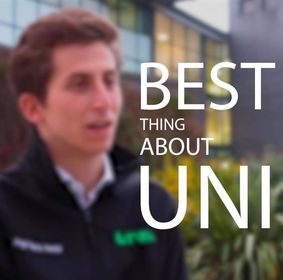An interview with Angel Marco, Chief Chassis Engineer at Warwick Racing
Recently, Warwick Racing interviewed our Chief Chassis Engineer, Angel Marco about his role in the team, the challenges of creating a race car during Covid and his hopes and expectations for the upcoming WRe2.
On the role of chief chassis engineer:
Most of us at university are used to repeatedly checking the project rules before starting an assignment. Angel’s role in leading the chassis design is no different. ‘I am in charge of making sure the chassis complies with all the regulations and is safe’ said Angel about what his primary job entailed, adding that he had to ensure that the bodywork fit the powertrain components as efficiently as possible. Like most racing divisions, Formula Student has a strict set of technical regulations which the whole team must comply with in order to field an eligible car come track day.
On what a day in the workshop is like:
Workshop days are often busy. Keeping up to date with team progress is key as the head of the department and Angel admits his first task is often to check his emails. Angel’s role ensure that he doesn’t merely have to communicate with the other members of his team- but also with suppliers and sponsors. Warwick Racing designs every component of our cars, meaning that keeping of top of the manufacturing of key components is a critical responsibility. ‘Collaboration in engineering is vital’ Angel mentions as he explains that having a larger team helps with the practical problems of the design and manufacturing process, because with more brains allocated to an issue there are more diverse skill-sets are available to devise solutions.
On working through Covid:
‘We need everybody to be in the same room ideally’ Angel laments when discussing the impact of the Covid Pandemic on the team. Given the practical nature of engineering, holding online meetings doesn’t offer the same physical freedoms of being able to see and touch the parts. According to Angel, using Microsoft Paint has been a handy temporary solution to sketching components and detailing diagrams of the chassis build. On a slightly more professional side, the team utilises C.A.D (Computer Aided Design) to replicate intricate 3D models, which allows the engineers to share accurate and detailed information about produced components for the WRe2.
On what the most important element of chassis design is:
‘People underestimate how important weight is. You want everything to be as light as possible’. Angel’s words would resonate well with former Lotus founder Collin Chapman, who once famously quoted that that the key to competitive to car design was to ‘simplify, then add lightness’. Angel states that merely making the car light is not the only challenge however, but maintaining the so-called ‘50-50’ weight ratio between the front of the car and the back, which plays a crucial role in maintaining the car’s overall balance and handling.
On the WRe2:
Angel has high hopes for the WRe2, largely because of the new dual-motor powering the car. Warwick Racing’s first foray into electric motorsport, the WRe1, had only a single motor, meaning this second iteration of the car will have much more power compared to its predecessor. The WRe2 will also experiment with ‘torque vectoring’- an engineering art which employs a differential to vary the torque output to each wheel of the car individually. With this technology, the WRe2 should have the ability to balance itself more efficiently when cornering, allowing the driver to have more confidence putting that extra power down through the bends.
On what Warwick Racing has meant to him:
‘Warwick racing has been the best thing about University. I’ve been able to learn so many skills that the academic course (automotive engineering) hasn’t been able to teach me.
__


